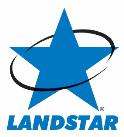Insurance and claims decreased $3,121,000 in the 2023 thirteen-week period compared to the 2022 thirteen-week period. The decrease in insurance and claims expense compared to the prior year was primarily due to decreased net unfavorable development of prior years’ claims in the 2023 thirteen-week period and decreased severity of current year trucking claims during the 2023 thirteen-week period, partially offset by increased insurance premiums, primarily for commercial auto and excess liability coverage. During the 2023 and 2022 thirteen-week periods, insurance and claims costs included $1,855,000 and $4,273,000 of net unfavorable adjustments to prior years’ claims estimates, respectively.
Selling, general and administrative costs increased $854,000 in the 2023 thirteen-week period compared to the 2022 thirteen-week period. The increase in selling, general and administrative costs compared to prior year was primarily attributable to increased information technology costs and increased wages, almost entirely offset by a decreased provision for incentive compensation and decreased employee benefit costs, primarily attributable to decreased medical and pharmacy costs under the self-insured portion of the Company’s medical plan. Included in selling, general and administrative costs was incentive compensation expense of $1,421,000 and $5,199,000 for the 2023 and 2022 thirteen-week periods, respectively.
Depreciation and amortization increased $1,441,000 in the 2023 thirteen-week period compared to the 2022 thirteen-week period. The increase in depreciation and amortization expense was primarily due to increased depreciation on new and updated digital tools deployed for use by the Company’s network of agents, capacity providers and employees, partially offset by decreased trailing equipment depreciation.
The quarter-over-prior-year-quarter change in interest and debt (income) expense was $1,849,000, with net interest income of $726,000 in the 2023 thirteen-week period compared to net interest and debt expense of $1,123,000 in the 2022 thirteen-week period. The increase in interest and debt (income) expense was primarily attributable to increased interest income earned on cash balances held by the transportation logistics segment and decreased average borrowings on the Company’s revolving credit facility, as the Company had no borrowings during the 2023 period, partially offset by increased interest expense related to finance lease obligations.
The provisions for income taxes for the 2023 and 2022 thirteen-week periods were based on estimated annual effective income tax rates of 24.4% and 24.5%, respectively, adjusted for discrete events, such as benefits resulting from stock-based awards. The estimated annual effective income tax rate was higher than the statutory federal income tax rate of 21% in the 2023 period primarily attributable to state taxes and non-deductible meals and entertainment. The estimated annual effective income tax rate was higher than the statutory federal income tax rate of 21% in the 2022 period primarily attributable to state taxes and non-deductible executive compensation. The effective income tax rate for the 2023 thirteen-week period was 23.3%, which was lower than the estimated annual effective income tax rate of 24.4%, primarily attributable to excess tax benefits realized on stock-based awards. The effective income tax rate for the 2022 thirteen-week period was 22.8%, which was lower than the estimated annual effective income tax rate of 24.5%, primarily attributable to excess tax benefits realized on stock-based awards.
Net income was $78,195,000, or $2.17 per diluted share, in the 2023 thirteen-week period. Net income was $124,839,000, or $3.34 per diluted share, in the 2022 thirteen-week period.
CAPITAL RESOURCES AND LIQUIDITY
Working capital and the ratio of current assets to current liabilities were $612,548,000 and 1.8 to 1, respectively, at April 1, 2023, compared with $561,255,000 and 1.6 to 1, respectively, at December 31, 2022. Landstar has historically operated with current ratios within the range of 1.5 to 1 to 2.0 to 1. Cash provided by operating activities was $139,035,000 in the 2023 thirteen-week period compared with $94,965,000 in the 2022 thirteen-week period. The increase in cash flow provided by operating activities was primarily attributable to the timing of collections of trade receivables, partially offset by decreased net income.
The Company declared and paid $0.30 per share, or $10,806,000 in the aggregate, in cash dividends during the thirteen-week period ended April 1, 2023 and, during such period, also paid $71,854,000 of dividends payable which were declared in December 2022 and included in current liabilities in the consolidated balance sheet at December 31, 2022. The Company declared and paid $0.25 per share, or $9,324,000 in the aggregate, in cash dividends during the thirteen-week period ended March 26, 2022 and, during such period, also paid $75,387,000 of dividends payable which were declared in December 2021 and included in current liabilities in the consolidated balance sheet at December 25, 2021. During the thirteen-week period ended April 1, 2023, the Company purchased 89,661 shares of its common stock at a total cost of $15,433,000. During the thirteen-week period ended March 26, 2022, the Company purchased 693,550 shares of its common stock at a total cost of $109,332,000. As of April 1, 2023, the Company may purchase in the aggregate up to 2,910,339 shares of its common stock under its authorized stock purchase programs. Long-term debt, including current maturities, was $93,992,000 at April 1, 2023, $9,408,000 lower than at December 31, 2022.
27
